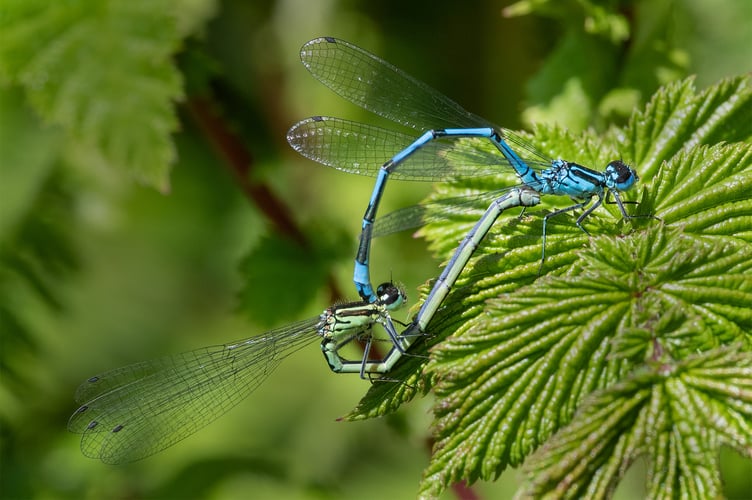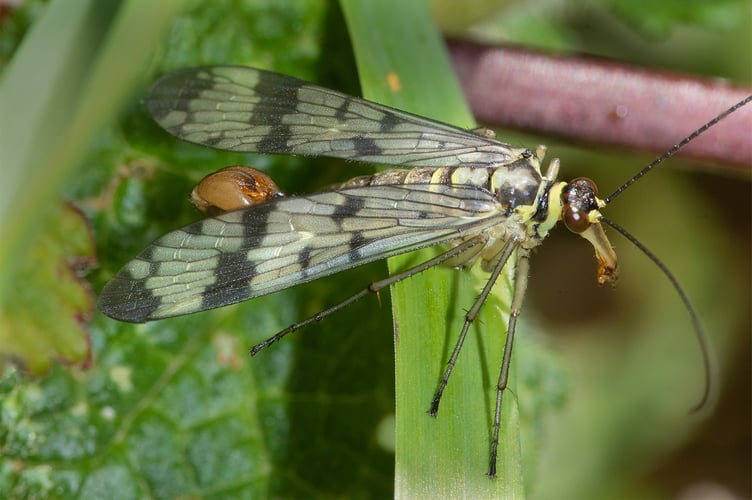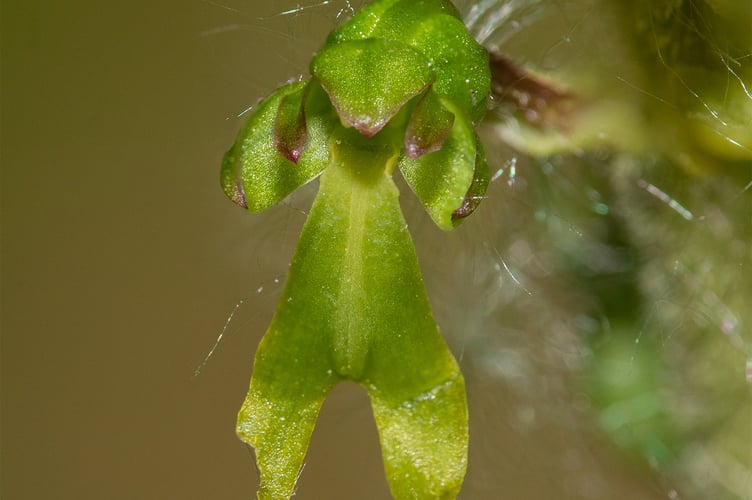About a month ago, Fiona, in her Nature Notes, mentioned that Twayblade plants had appeared on a site which had recently been cleared in Andrews Wood.
Unfortunately, that area is now waist high with bracken and other ferns. All I could find were two small and scruffy looking Twayblades.
However, luckily, there is a nearby location with a few well established plants which had 18 inches high flower spikes covered in unique tiny flowers.
Although Twayblades belong to the orchid family they are completely different in appearance from the more conventional brightly coloured orchids which abound in Andrews Wood. These were originally Heath Spotted Orchids or Southern Marsh Orchids but most plants in the wood are now hybrids of those species.

Twayblade flowers are totally unlike what most people would regard as being flowers. They are small man shaped items which can easily be missed unless you look very closely at the plant.
The quick growth of bracken demonstrates the potential problems of returning areas to a wild state. Many invasive plants will quickly colonise any suitable location.
Wild areas need a lot of careful control to flourish and achieve a good diversity of plant and animal species.

Bracken is particularly difficult because there are few ways to naturally keep it under control. Other potentially problematic plants include Gorse and even Rhododendron which has escaped from gardens.
On the plus side, some plants such as brambles and nettles are extremely beneficial. They provide food and a habitat for insect larvae which feed other species like birds and small mammals.
This is why many environmental organisations rely on volunteers and animals including horses and cattle to reduce the impact of rogue plant species. But considerable care is required because direct intervention on behalf of an individual plant or animal species can be devastating to many others.
A few years ago Rob Wolton (and a few others) investigated the impact of allowing cattle to roam freely through wet woodland.
They captured and identified insects emerging from the soil in areas with or without cattle access but this produced a complex result. Some insect species appeared to benefit from light grazing while others were more numerous in excluded areas.

Overall, there was a slight increase in areas with occasional cattle access although frequently trampled ground produced low insect numbers. Firmer ground can, obviously, withstand heavier trampling than soft muddy areas.
It could be interesting to reproduce this experiment but also looking at plants.
I recently found good numbers of Azure Damselflies, including some pairs, in Andrews Wood so it appears that the new ponds are being successful.
A few Common Blue and Large Red Damselflies were also present.
On the coast path, near Bolberry Down, I saw several Speckled Yellow moths flitting around in the sunshine on a calm morning. The dark brown blotches on a bright yellow background are distinctive even in flight.
Although they were flying close to me they rarely landed so I assume they were males engaged in an everlasting search for females. When one briefly landed near me my camera malfunctioned and by the time I turned it off then on again the moth had gone.
Further along the path I discovered my first Panorpa communis Scorpionfly of the year. We get two virtually identical species in our area with Panorpa germanica appearing earlier and later than the midsummer period of communis.
Other attractive and easily recognised finds included a Wasp Beetle with its distinctive wasp like yellow and black markings. Some small bright orange and black Arge cyanocrocea Sawflies were flitting from one flower to another.
Clumps of tall Foxgloves swayed in the slight sea breeze while the heat was proving too strong for a herd of sleepy cattle in the valley behind Soar Mill Cove. And on the cliff edge I caught a quick glimpse of a Roe Deer.





Comments
This article has no comments yet. Be the first to leave a comment.